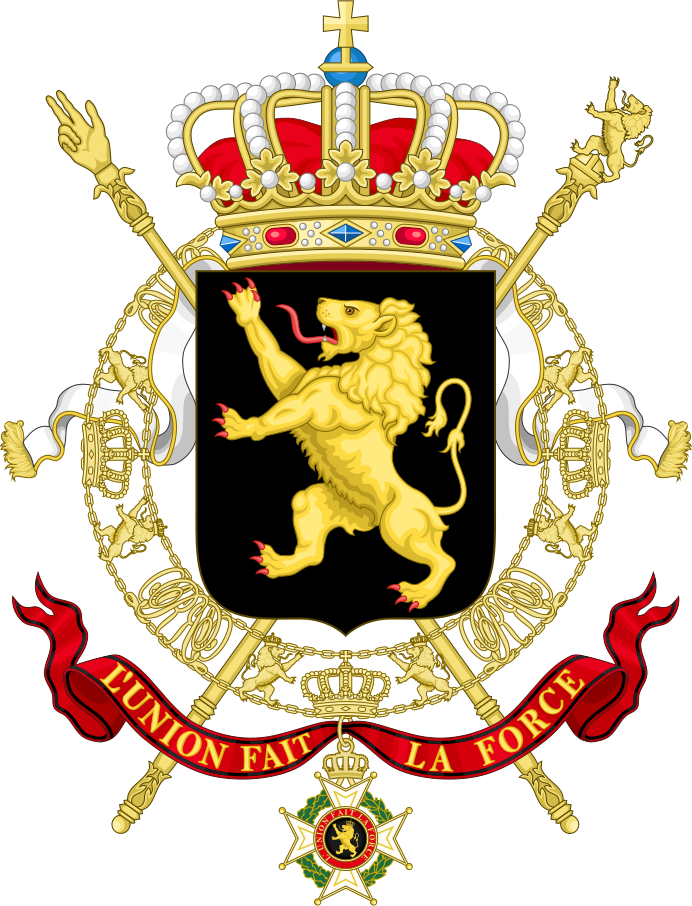
Belgium
Eendracht maakt macht
(Unity makes strength)

History
Geography
Armed forces
Religion
Education
The history of Belgium extends before the founding of
the modern state of that name in 1830.For most of its
history, what is now Belgium was either a part of a larger
territory. Due to its strategic location and its history
as a country of contact between different cultures,
Belgium has been called the "crossroads of Europe"; for
the many armies fighting on its soil, it has also been
called the "battlefield of Europe" or the "cockpit of
Europe". It is also remarkable as a European nation which
contains, and is divided by, a language boundary between
Latin-derived French and Germanic Dutch.
Belgium's modern shape can be traced
back at least as far as the southern core of the medieval
Burgundian Netherlands. These lands straddled the ancient
boundary of the Scheldt that had divided medieval France
and Germany, but they were brought together under the
House of Valois-Burgundy. The Eighty Years' War
(1568–1648) later led to the split between a northern
Dutch Republic and the Southern Netherlands from which
Belgium and Luxembourg developed. This southern territory
continued to be ruled by the Habsburg descendants of the
Burgundian house, at first as the Spanish Netherlands.
Invasions from France under Louis XIV led to the loss of
what is now Nord-Pas-de-C alais to France.
alais to France.
The first King of Belgium,
Leopold I, assumed the throne in 1831. Leopold became
known domestically for bringing a swift end to the Belgian
theater in the Revolutions of 1848, and internationally as
pacifying force in European politics, mediating disputes
between great powers and maintaining Belgian neutrality.
Belgium's second king, Leopold II, became a controversial
figure when he established a colony in south-central
Africa, the Congo Free State, as his own personal fief.
When the atrocities of his rule became public, he was
stripped of control of the colony by the Belgian
government, establishing the Belgian Congo. Domestically,
Leopold presided over a state known for growing liberal
sentiments, with the growth of the labour movement and the
establishment of universal male suffrage.
The first half of the twentieth
century was much more tumultuous for Belgium. Belgian
resistance to the German invaders resulted in the Rape of
Belgium during World War I. The surrender by Leopold III
of Belgium to German forces shortly after the 1940
invasion of the country served to drive a wedge between
the King and his people and would forever damage his
legacy. After the war he remained in exile while a regent,
Prince Charles, Count of Flanders, ruled in his stead. His
attempt to return to the country and re-exert personal
control of the country led to a constitutional crisis in
1950, which led to his abdication in favor of his son
Baudouin.
Baudouin took a less active role
in politics than his predecessors, and Belgium entered the
second half of the twentieth century showing an
unprecedented era of economic growth, as Belgium took an
active role in the formation of the Benelux customs union
with its neighbors, the Netherlands and Luxembourg. The
union allowed the states to resist American political and
economic influence during the period of the Marshall Plan
and allowed the region to plot its own economic path.
Ultimately, the Benelux union would serve as a model for
the Euro pean Economic Community, a precursor to the
European Union; to this day Brussels serves as the seat of
many of the European Union institutions. Other major
events during Baudouins reign included the independence of
the Belgian Congo leading to the Congo Crisis, the
conflicts between the Christian Social Party and its more
left-leaning opponents over school funding, and the growth
of the Flemish Movement.
pean Economic Community, a precursor to the
European Union; to this day Brussels serves as the seat of
many of the European Union institutions. Other major
events during Baudouins reign included the independence of
the Belgian Congo leading to the Congo Crisis, the
conflicts between the Christian Social Party and its more
left-leaning opponents over school funding, and the growth
of the Flemish Movement.
Domestically, the country has
faced divisions over differences of language and unequal
economic development. This ongoing antagonism has caused
far-reaching reforms since the 1970s, changing the
formerly unitary Belgian state into a federal state, and
repeated governmental crises. It is now divided into three
regions: Flanders (Dutch-speaking) in the north, Wallonia
(French-speaking) in the south, and bilingual Brussels in
the middle.
Since the 1990s, Belgium has
become involved in several international conflicts, under
the aegis of various United Nations peacekeeping forces,
including the Rwandan Civil War, the ongoing civil wars in
Somalia, the Kosovo War, and several others. Environmental
concerns came to a head in the Dioxin affair, bringing
down the Belgian government of Jean-Luc Dehaene's
premiership. Since then, the Belgian political landscape
has become increasingly politically fragmented; the
notorious 2010 Belgian federal election, it took nearly a
year to form a government, in more recent elections a
growing right-wing Flemish nationalist movement has had a
strong influence over domestic politics.